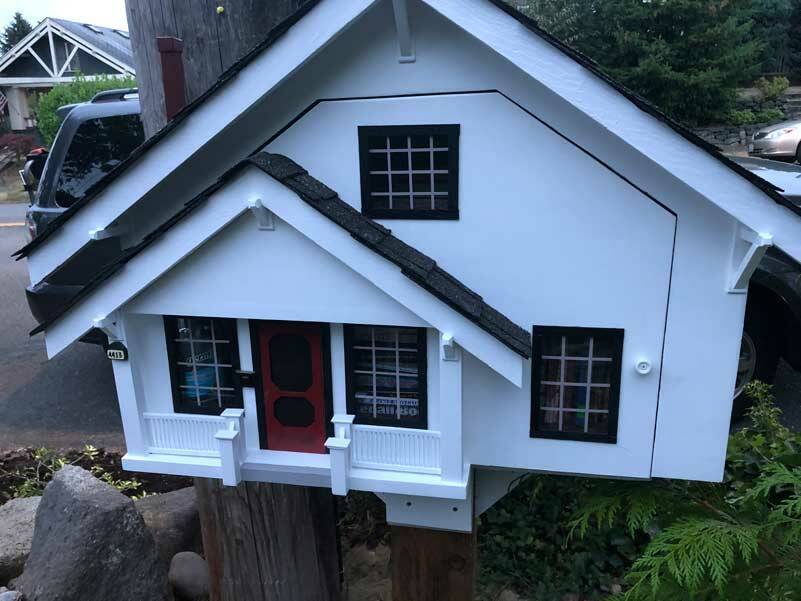By Morf Morford
Tacoma Daily Index
It is a general assumption that becoming a parent changes you.
But what about becoming a home owner?
Becoming a parent, in most cases, forces us to become more responsible, less self-centered, and, in many ways, more mature.
Becoming a homeowner, you’d think, would do many of those same things.
Having a child, at its most basic, requires that we care for it.
Whether we do, or don’t carry out that most basic of adult human responsibilities, is the marker, for better or worse, of our identity, if not character.
Home ownership is not so terribly different.
Like becoming a parent, becoming a home owner brings on whole new sets of obligations and identities.
I don’t think I’ll ever be a “Get off my lawn!” type of home owner, but it makes a lot more sense to me now.
We home owners have invested far more money, time and emotional energy into our homes and yards than we might be willing to admit, and to let a stranger just wander through, or even pick flowers (for example) from my yard or garden, elicits, if nothing else, an emotional response.
Some, if not many of us, derive a sense of identity, even responsibility from our neighborhoods and surrounding areas.
We homeowners bought our homes and expect, perhaps naively, that the neighborhood that we moved into should be the neighborhood we find ourselves in several years later.
Some changes are slow enough, or perhaps “natural” enough to not be noticed or to be a cause of concern.
My immediate neighborhood (the five or so houses next to mine) was, when we moved in, largely a cat neighborhood.
Now it’s a dog neighborhood.
The dogs’ activities and noise level is not intrusive – but it’s not the cat dynamic I took as “normal” for many years.
When we first moved into our house, many of the classic older homes in the area were occupied by widows.
The widows are long gone – and, in most cases, families have taken their place.
We went through a phase of teenagers, who then left for college, careers and lives of their own.
We as a neighborhood had a collective sense of “empty nest” syndrome – until we didn’t.
We currently have far more elementary age kids than we’ve ever had.
They too, will grow up and leave the neighborhood.
And many of the adults will downsize or move and the neighborhood will change in (relatively) expected, and many unexpected ways.
And that’s my point; neighborhoods always change. And not always in ways that previously established residents might like. Or anticipate.
Our house is one block out from a dead end street. For years, we would see very few cars, besides neighbors, go by our house.
Back in the cat days, we would see cats sleeping in the street.
Not now.
Traffic might not be intense, but it is constant.
In short, our neighborhood is not what it was.
I, like most home owners I presume, never put into words, or even thoughts, the idea that my, or any neighborhood should be safe from any changes or challenges that might occur over time.
I currently live in a neighborhood of homes predominantly built in the 1920s or 1930s.
The newest home for several blocks was built in the 1940s. And the (very) few apartments that exist were built in the 1960s or later.
I grew up on the edge of Parkland and Spanaway, where virtually every home was built after 1950.
And now most of my childhood landscape is literally gone.
My favorite wooded areas, even an idyllic and relatively secret pond, have been paved over.
Apartment complexes and strip malls have taken over what were once both beautiful areas and stunning views of the mountain.
What was once unique, is now a depressing mono-culture of interchangeable chain stores, parking lots and fast food places.
I’m not worried that my current neighborhood will turn into a strip mall dystopia – city zoning is far too strict to allow that, but I also know that change, even incremental change is inevitable.
I’m not in one of those historically recognized districts, and I’m not convinced I’d want to be, but I also don’t want to see wholesale destruction of neighborhoods.
A large motivation for moving into an established neighborhood was that it was, in fact, established, and not likely to be razed and re-developed, at least not on a total scale, like my childhood neighborhood.
The term “NIMBY” (Not In My Back Yard) is often used to describe those who oppose (often racially-tinged) changes in their neighborhoods.
As with most terms, NIMBY is a clumsy, and often dismissive, if not derogatory term.
For better or worse, home ownership is related to stable incomes, consistent voting and higher education levels.
And terms like ‘neighborhood character’ and ‘historic preservation’ are often used to exclude, more than include, anyone.
Housing, as always, is far more than shelter. And keeping (or protecting it) could not be more primal.
And once you live in a neighborhood, you, for better or worse, get a sense of who belongs and who doesn’t.
Home ownership is, or was, one of the primary features of “the American Dream” – the concluding evidence of who belonged.
Terms like ‘neighborhood character’ could mean anything, but mostly they mean something like “the people and style of homes already here”.
Housing shortages and rising costs only increase the sense of possessiveness and self-protection implied in the, for most of us, largest investment we will ever make in our lives.
It could not be more obvious that the housing market has changed, but it is not so obvious how the housing market, from unstoppable bidding wars, to neighborhood “protection” schemes have changed us.
But it certainly has.





